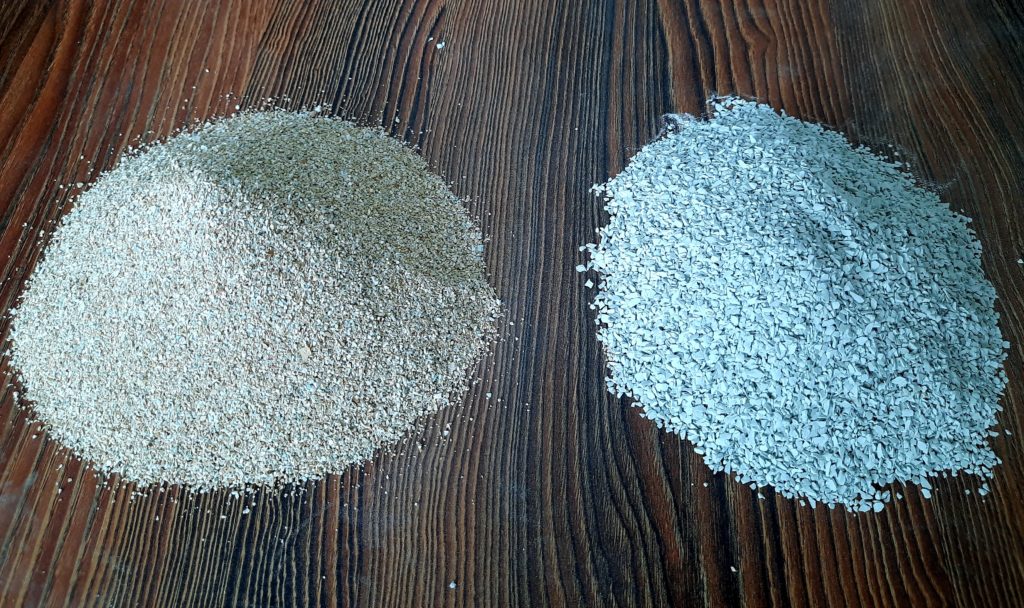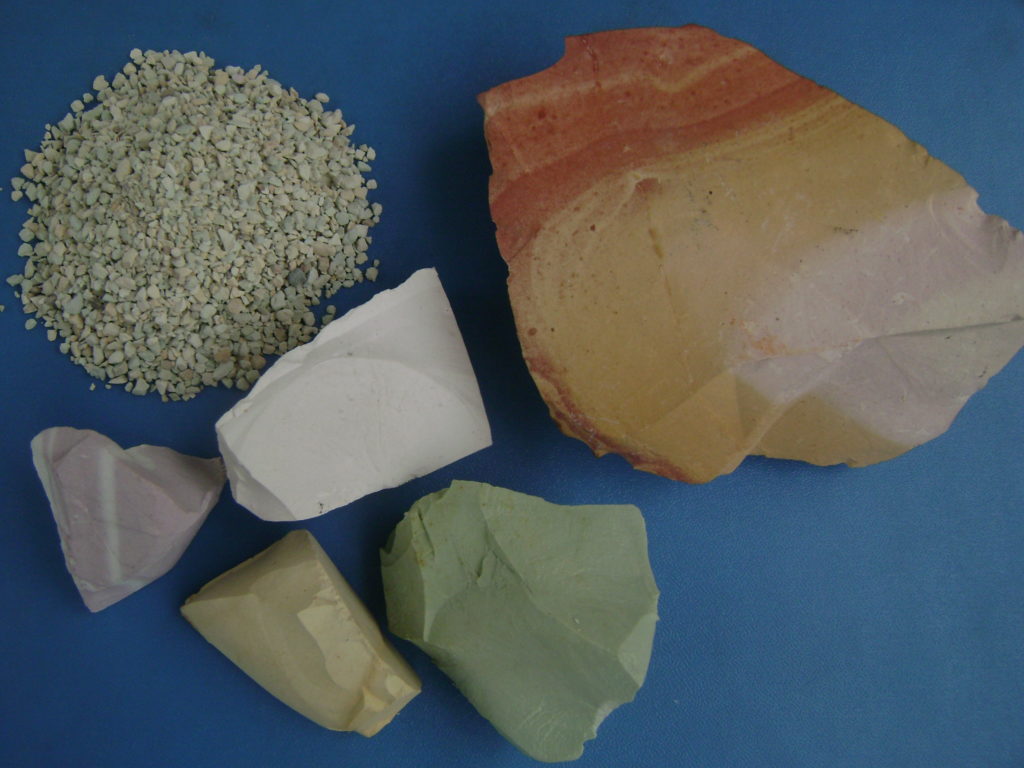Concepts of zeolite
What is Zeolite?
Pollution and lack of water, soil and food resources and the need to provide healthy and sufficient food for the growing population of the world are among the most important challenges facing humans today. These problems, along with the increasing spread of many diseases following these pollutions, as well as the use of industrial and synthetic materials, have led to an increase in the demand for the use of natural materials in the past decades. Natural zeolites are among the natural materials that can play a significant role in helping to solve many of these problems due to their unique properties. This mineral is used in many areas such as agriculture, livestock and poultry, health, water and sewage, environment and many industries such as oil industry, paper, chemical and petrochemical industries, construction materials and the production of special types of cement, ceramics and tiles, food industries. And medicine is used and its use is increasing day by day until it is called as a magical mineral. Although the use of zeolites has a history of more than a thousand years, its written history dates back to 1756, when a Swedish mineralogist named Kronsted discovered the first zeolite mineral (stilbite). He noticed that a group of minerals emit water vapor when heated, that’s why he named them zeolite, which is a Greek word meaning boiling stone. Zeolites are aluminosilicate minerals of alkaline and alkaline earth metals, which are considered to be tectosilicates, like quartz minerals. The general chemical formula of zeolites can be summarized as follows:
MxDy[Alx+2ySi n-(x+2y)O2n].mH2O
M= Na, Ka, or other monovalent cations
D= Mg, Ca, Sr, Ba, and other divalent cations.
Although M and D often include alkali and alkaline earth metals in natural zeolites, other univalent or bivalent cations may replace them. In addition to Al, some other cations such as Fe+3 can replace Si in the structure of this mineral.
The structure of this mineral consists of tetrahedra where oxygen is placed at the vertices of these tetrahedra around a central cation and shares this oxygen with the adjacent tetrahedra. The central cation is Si, which is partially replaced by Al and sometimes by some other trivalent cations.


Substitution of Si by negatively charged cations creates a negative network charge. This additional negative charge can be neutralized through univalent or divalent cations placed in the cavities of zeolites through weaker chemical bonds. Due to the looseness of this bond, the movement and exchange of these cations is easily done, and this feature of high ion exchange, without disturbing the crystal structure, causes the use of these minerals in some industries. The dominant monovalent or divalent cations in the structure of zeolites are sodium, potassium and calcium cations.

Zeolites are formed from the transformation of raw materials such as feldspar minerals, feldspar, clay minerals, or zeolites themselves, or non-crystalline materials such as volcanic glass. Due to their high reactivity, similarity in chemical composition with zeolites, as well as temporal and spatial expansion, volcanic glass is the most suitable material for conversion into zeolites. Placing these raw materials in salty and alkaline environments causes them to become zeolite minerals. Minerals associated with zeolite minerals often include clay, sometimes calcite, halite (salt), feldspars and different types of quartz polymorphs such as opal, alpha quartz and even volcanic glass. Although more than 45 types of natural zeolites have been known so far, only the minerals analsim, chabazite, clinoptilolite, philpsite, erionite, hyolandite and mordenite are found in abundance in nature, and among these minerals, clinoptilolite is the most abundant natural zeolite. The dominant zeolite in the reserves of our country is also of this type, although in some areas, less amount of analism has been seen. The presence of different accompanying minerals and their variable abundance, the abundance of clinoptilolite mineral and the type of clinoptilolite mineral are among the features that are very influential in choosing this mineral for use in different fields, and a proper choice requires specialized technical knowledge in this field. For example, some studies have shown that the presence of some secondary minerals due to the natural activation of zeolites causes an increase in the specific surface area and higher porosity in zeolites of some regions, as a result, the efficiency of this mineral in cases such as the absorption of gases such as ammonia and hydrogen sulfide, which In practical areas such as fisheries, water and wastewater treatment, gas separation, etc., they are of special importance.
This mineral with a ratio of silicon to aluminum of more than 4 is one of the zeolite minerals of the hiulandite family and is actually classified as high-silicon zeolites, which is formed from the alteration of tuffs and tuffites with the combination of rhyolite and rhyodacite. Zeolites with a high ratio of silicon to aluminum tend to absorb monovalent cations.
Based on the dominant cation in the structure of clinoptilolite, three types of sodium, potassium and calcium clinoptilolite can be observed in nature. Because the chemical and physical characteristics of these cations are different from each other, the thermal and chemical characteristics of the three types of clinoptilolite are also somewhat different from each other, and when choosing the right clino, this point should be taken into serious consideration along with other points. For example, studies have shown that potassium clinoptilolites have higher thermal stability, or when reacting with apatite minerals to release the phosphorus needed in agricultural soils, this type of clinio performs better than other types, especially calcium. The zeolites of Afrazand company are mostly of potassium type.
In Iran, there are huge reserves of this mineral due to the extensive volcanic activities in the Eocene period and also the suitable climatic conditions for the transformation of these volcanic glasses into clinoptilolite type zeolite.
The main characteristics of zeolites
The most important features of zeolites that have led to the development of their application in various fields such as agriculture, livestock and poultry, environment, water and sewage and industries can be summarized as follows:
High power of cation exchange, which causes catalytic properties and absorption of some heavy metals such as Cd, As, Pb, Hg,…
The ability to absorb some anions such as fluorine, nitrate, etc.
Wide specific surface which causes high surface absorption and strong catalytic properties.
High thermal, chemical and mechanical stability
The presence of nanometer holes and pores with a certain diameter in the mineral structure
Storage and release of water and fluids without disturbing the mineral network
Identification and selection of suitable zeolite
Due to the fact that the economic mineral reserves of clinoptilolite are obtained from the sedimentary rocks containing it, and it is obvious that each of these reserves have different genesis and qualities and their specific impurities. Therefore, the selection and diagnosis of the required zeolite should be done through analysis and appearance with appropriate accuracy. As mentioned before, clinoptilolite is a hydroaluminosilicate mineral with the main cations of sodium and potassium and other minor cations, whose purity can be around 80%, and of course, it is better not to have less than 60%. Impurities associated with zeolite (clinoptilolite) in Iran often include gypsum CaSO4, lime CaCO3, clay (kaolin, montmorillonite or bentonite), mordenite, sodium sulfate, salt, types of feldspar and also free silica in the form of quartz or cristobalite, etc. which should be taken into account.
Clinoptilolite is white, cream, green, and even red and brown in color. Its grains are sensitive to moisture and easily stick to the tongue, but due to exposure to water and moisture, they do not emit the smell of clay, which indicates the presence of clay. . Zeolite is light and has a shell fracture and its surface is smooth and without dirt. The mechanical resistance of zeolite is relatively high due to its hardness of 5-5.5 and it is not easily crushed between fingers or by pressure. The amount of SiO2 is about 67% and LOI is about 10-12% and the total of Na2O, K2O and CaO between 6-9% are the most important factors experienced in its analysis.


These are the simplest experimental methods to identify zeolites. There are many such as structural, chemical and microscopic characteristics.
For this purpose and if you need advice, be sure to contact us.